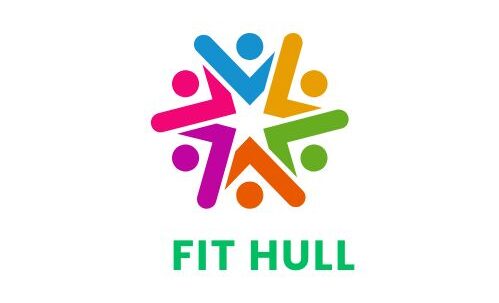For small businesses, marketing materials are critical in establishing brand identity and reaching potential customers. From business cards and flyers to banners and brochures, these tools must reflect professionalism while staying within budget. Recognizing a fair deal involves balancing quality, quantity, and cost while considering turnaround time and customer support.
Comparing providers is key to finding value. Look for transparent pricing, material options, and reviews to ensure you get what you need without overpaying. Utilizing resources like a Vistaprint promo code can help cut costs without sacrificing quality. These savings make it easier for small businesses to access professional-grade materials that support their outreach and growth, especially when budgets are tight and every dollar counts.
Essential Marketing Materials for Small Businesses
Begin by identifying which promotional tools will have the greatest impact for your business and target audience. Common essentials include:
- Business Cards: A professional business card remains one of the most effective networking tools, providing a portable, tangible reminder of your brand.
- Brochures and Flyers: These printed pieces share details about your products or services and work well for in-person events, mailers, and leave-behinds.
- Digital Assets: Your website, email templates, and social media graphics are the backbone of your online presence, critical for brand recognition and credibility.
- Promotional Items: Branded merchandise like pens, mugs, or reusable totes helps reinforce your message and keeps your business top-of-mind with customers.
Each piece of marketing collateral plays a unique role in capturing attention and turning prospects into loyal customers. Clarifying your needs early helps you focus your budget where it matters most.
Assessing Quality and Cost-Effectiveness
Once your priorities are set, it’s important to evaluate not just the cost, but also the quality and longevity of the marketing materials you plan to order. Consider:
- Material Quality: Durable papers, high-gloss coatings, and vibrant inks make a big difference in how your materials are perceived. For instance, a thick, matte business card is more likely to make a professional impression than a flimsy, budget option.
- Design Consistency: Consistent branding is key to a cohesive, professional look. All materials—digital or print—should align with your color palette, logo guidelines, and brand messaging.
- Printing Techniques: Advanced finishes like spot UV, embossing, or foil stamping can elevate your print materials, though they may increase production costs. Sometimes, a simpler design can be more effective and make better financial sense, especially for large quantities.
Remember: balance is everything. Sacrificing a bit of extravagance can enable wider distribution, while strategic investment in select high-value pieces can yield a strong ROI.
Negotiating with Vendors
Securing a fair deal often depends on how well you communicate and negotiate with your print and marketing suppliers. Building trust and clarity can unlock significant savings and better service. Consider these strategies:
- Bulk Orders: Placing larger orders typically reduces the per-unit price, making it more cost-effective for items you use often, like business cards or flyers.
- Multiple Quotes: Always gather estimates from several vendors before making a decision. Comparing options helps you understand market rates and leverage better deals.
- Long-Term Contracts: If your business frequently needs marketing materials, consider negotiating a longer-term agreement that will ensure a steady supply and preferred pricing.
Establishing a mutually beneficial partnership with reliable suppliers can result in priority service, discounted rates, and quicker turnaround when you need it most.
Cost-Effective Production Strategies
Maximizing your marketing dollar is easier with the right production approach and technology. Here are some leading strategies:
- Print-On-Demand Services: Services enable you to print only what you need, when you need it, reducing waste and inventory costs. This is perfect for small runs or frequent updates to marketing materials.
- Digital Distribution: Sharing brochures and advertisements digitally—via email or social media—eliminates printing costs and supports instant updates as your offerings evolve.
- In-House Design: Platforms like Canva let even novice designers create professional-grade visuals, eliminating the need to outsource every project and speeding up your production cycle.
Adopting these methods empowers even the smallest teams to deliver polished, consistent marketing materials without breaking the bank.
Leveraging Free and Low-Cost Marketing Tools
Many small businesses can elevate their marketing reach thanks to digital tools available at little or no cost. Integrating these solutions expands your campaign’s impact:
- Email Marketing Platforms: Tools like Mailchimp offer generous free plans for smaller subscriber lists, allowing you to nurture leads and maintain client relationships efficiently.
- Social Media Management: Scheduling services like Hootsuite streamline content distribution and enhance your consistency across channels.
- SEO Optimization: Free tools such as Google Analytics and Google Search Console provide insights into customer behaviors and campaign effectiveness, allowing you to refine your strategy for better results.
These platforms help automate processes, track ROI, and customize communications—making them invaluable for ongoing marketing success.
Monitoring and Evaluating Marketing Material Performance
Continually assessing your marketing material’s performance ensures your investment is working as hard as you are. Monitor these metrics for insight:
- Response Rates: Whether tracking QR code scans or website visits, measure how many prospects engage directly with your content.
- Conversion Rates: Analyze how many of those responses transform into inquiries, leads, or sales.
- Customer Feedback: Contact customers directly or issue brief surveys to learn what they appreciate or remember most about your campaigns.
Consistently tracking these numbers lets you make informed adjustments, ensuring continued improvement and more effective marketing expenditure.
Staying Updated with Marketing Trends
The marketing world evolves constantly. Staying informed about the latest best practices—like integrating QR codes with print materials or embracing short-form video on social platforms—can set your business apart from competitors. Following industry blogs, subscribing to newsletters, and attending webinars are excellent ways to keep your strategy fresh.
Remaining agile and proactive in adopting new techniques ensures your small business continues to connect with customers innovatively, boosting your return on investment and long-term business growth.
Conclusion
Identifying a fair deal on marketing materials comes down to clarifying your needs, conducting a thoughtful assessment of quality and value, building collaborative relationships with vendors, and embracing both traditional and digital marketing solutions. When you combine savvy budgeting, resourceful production methods, and a commitment to continuous improvement, your small business can outshine the competition—without overspending.











